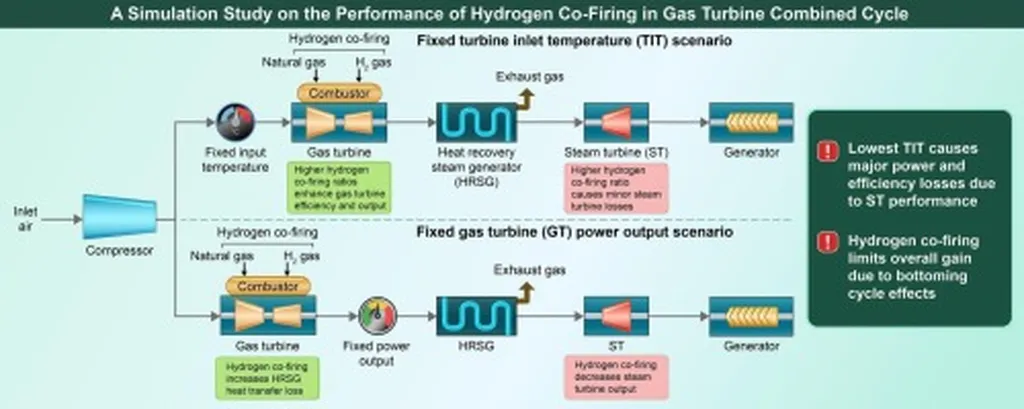In the quest to decarbonize power generation, hydrogen is emerging as a promising fuel, but integrating it with existing infrastructure presents challenges. A recent study published in *Case Studies in Thermal Engineering* sheds light on the combustion dynamics of methane-hydrogen co-firing, offering insights that could guide the energy sector’s transition toward cleaner fuels.
Led by Sanghyeon Lee from the Department of Automotive Engineering at Gangneung-Wonju National University in South Korea, the research employs computational fluid dynamics (CFD) to analyze how hydrogen co-firing affects combustion in gas turbine combustors. The findings reveal significant shifts in flame behavior and emissions as hydrogen content increases.
As the hydrogen co-firing ratio rises from 0% to 60%, the flame becomes increasingly attached to the burner, with the OH reaction zone shifting upstream by up to 80 millimeters. This phenomenon, known as flashback, poses a higher risk of combustion instability—a critical concern for industrial gas turbines. “The upstream shift of the flame suggests a higher risk of flashback due to hydrogen’s faster burning characteristics,” Lee explains. “This could lead to operational challenges if not properly managed.”
The study also highlights changes in emissions, particularly nitrogen oxides (NOx), which increase to approximately 140 parts per million at an equivalence ratio of 0.7. This trend aligns with experimental observations, underscoring the need for careful control of operating conditions to mitigate emissions while leveraging hydrogen’s benefits.
One of the most intriguing findings is the development of an inner recirculation zone within the burner, which alters the flame structure and raises the maximum temperature in the flame region to around 2200 Kelvin. “These numerical results provide a reference for operational guidelines and assessing the feasibility of hydrogen co-firing in industrial gas turbines,” Lee notes.
For the energy sector, these insights are invaluable. As power generators increasingly explore hydrogen co-firing to reduce carbon emissions, understanding its combustion characteristics becomes crucial. The research suggests that while hydrogen offers a pathway to decarbonization, its integration requires careful management of flashback risks and emissions. By providing a detailed analysis of these dynamics, the study equips engineers and operators with the knowledge needed to optimize hydrogen co-firing in gas turbines.
As the energy landscape evolves, research like this will play a pivotal role in shaping the future of power generation. By bridging the gap between theoretical analysis and practical application, Lee’s work offers a roadmap for the energy sector’s transition toward a more sustainable future.

